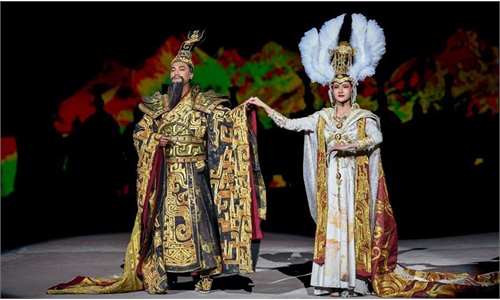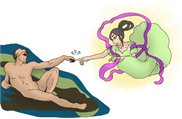ARTS / CULTURE & LEISURE
Modern adaptations of mythology proof of strong cultural confidence
Source of inspiration
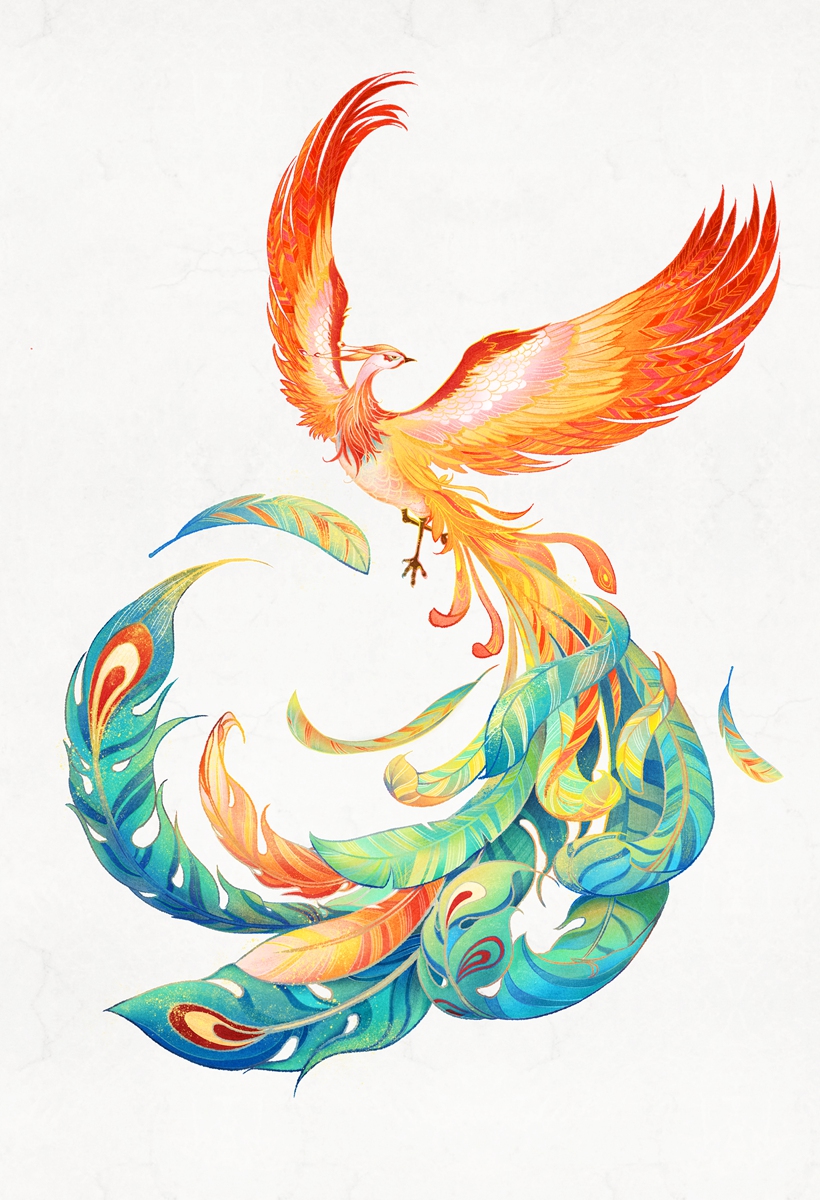
Legendary creature mentioned in Chinese mythology Classic of Mountains and Seas Photo: VCG
It must be the bravest and romantic story in Chinese mythology Classic of Mountains and Seas that the main character giant Kuafu, who indefatigably chased the sun, is not only named on China's first satellite specially designed to carry out comprehensive probes of the sun, but also has inspired China's numerous modern writers, artists and directors including director Zhou Jun.
Zhou is busy now and working on the final preparation for his latest mythology-inspired evening gala to be aired on China's Henan TV and streaming site Youku on Saturday, when the Chinese Little New Year falls, a week before the Chinese Lunar New Year.
"The aesthetic wave of traditional Chinese culture has reached unprecedented heights in the hearts of the younger generation audiences. We are eager to find a new traditional cultural IP," Zhou told the Global Times.
"Classic of Mountains and Seas is undoubtedly a treasure in Chinese culture. Even it was born more than 2,000 years ago, the wonderful book, similar to the renowned Greek mythology, includes China's most fantastic geographical mountains and rivers, rare plants and exotic animals and hero myths. It is China's Avatar and Marvel."
Romantic imagination
The upcoming gala, the latest collaboration between Henan TV and Youku, features creative songs and dances from performers like Mao Buyi, Kenji Wu, Liu Yu and Sa Dingding, with China's traditional rhythm, being presented with XR technology and stage designs in line with the fantasy stories, in order to "let the music tell the story as much as possible, and let the story empower the music."
The director doesn't limit to telling specific stories, but aims to present the cultural beauty from different angles. Ten key words such as "guardian," "dream chasing" and "fearless" are introduced to sort out the cultural beauty.
In Liu's dance show Painting Scroll, the dancer uses his body movement as the strokes, painting three stories out on the stage. Interestingly, the colors of these three paintings all come from the traditional Chinese colors on the national treasures collected by the Henan Museum.
"The mythical beasts, which we still love and see as the auspicious ones are not only legends, but also become a romance for Chinese people," Liu told the Global Times.
"It has entrusted the Chinese people's expectation and yearning for a better life for thousands of years, and it is also the place where China's earliest heroic values were born."
The exciting news of successful launch of Kuafu 1 also inspires one scene at the gala to pay tribute to China's great aerospace achievements.
Director Zhou lingers in the scene that singer Wu says that "chasing the sun is the ambition of the human beings from the bottom of the heart!"
From the unreachable classic story of an ancient hero in the mythology more than 2,000 years ago, to the new epic completed by the Chinese more than 2,000 years later, what drives the heart is "not only strong pride, but also a very wonderful sense of time and space travel."
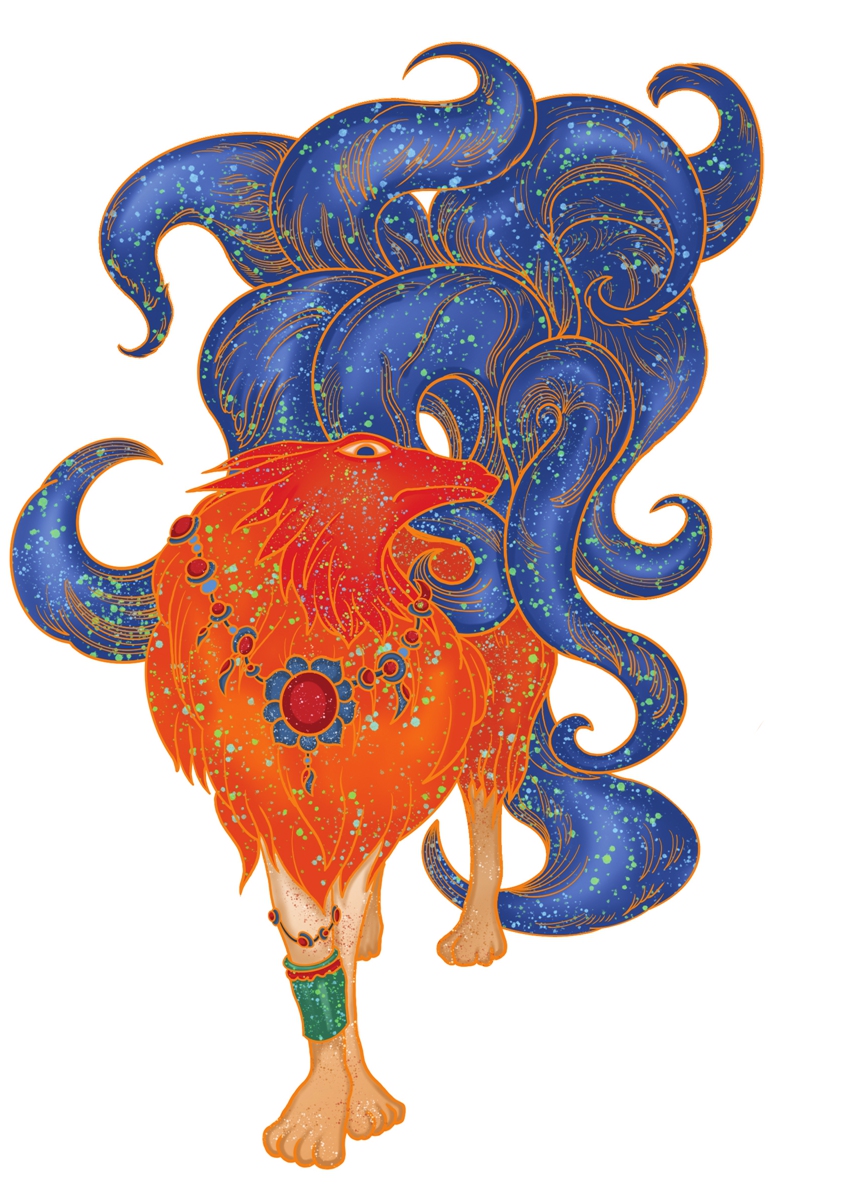
Legendary creature mentioned in Chinese mythology Classic of Mountains and Seas Photo: VCG
Shining gem
Besides mystery stories, the gala also introduces new technological means like XR to bridge traditions with pop culture and immersive stages to build China's ancient universe and showcase the spiritual power of the Chinese people, according to Yang Ming from the streaming site Youku.
"We are also working to develop the super IP of Classic of Mountains and Seas," she said.
In order to help Chinese civilization to be recognized and spread again by young audiences, it is necessary to learn from and integrate elements of traditional culture from the perspective of modern aesthetics.
The Classic of Mountains and Seas is one of the most shining gems in traditional Chinese culture as it is all-embracing, Luo Luo, a cultural critic based in Beijing, told the Global Times on Wednesday.
"The classic's meaning to China is like Greek mythology's to the West," Luo noted.
She said that the classic can fit well with the Chinese Lunar New Year, the most important traditional Chinese festival, and the fantasy and mysterious contents full of Chinese-style romance have gained attention and support from more young people.
"The adaptation and recreation of the Classic of Mountains and Seas in modern times is definitely a kind of proof of our strong cultural confidence," Luo said.
"There used to be some foreigners who thought Chinese people were unimaginative and not romantic because we don't have science fiction and fantasy works like Star Wars or The Lord of the Rings. But actually Chinese romantic imagination has formed since ancient times. The Classic of Mountains and Seas is such a reflection. Its majestic and whimsical style is rare even if having the whole world in view."
"Strengthening the interpretation of the Classic of Mountains and Seas is conducive to a profound understanding of traditional Chinese culture," Zhang Chaoyi, the dean of Institute for International Communication of Chinese Culture at Beijing Foreign Studies University, told the Global Times on Wednesday.
"We should make full use of the cultural images full of Chinese cultural characteristics and values in the book, so as to explore common cultural values for Chinese and foreign civilizations and promote mutual understanding between civilizations."
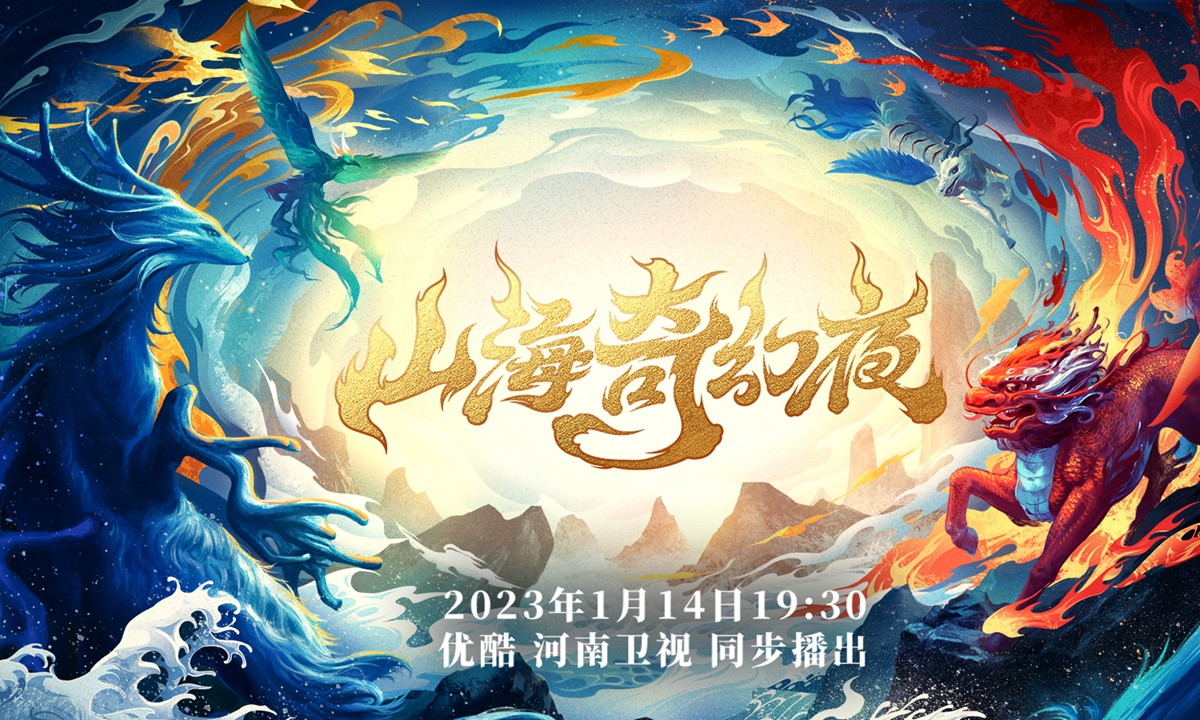
Photo: Courtesy of Youku
The Classic of Mountains and Seas is foundational to traditional Chinese mythology that interprets Chinese civilization and embodies the wisdom of ancient Chinese people. The record of the fabulous beast Nian closely related to the Chinese Lunar New Year also begins with the book, Zhang said.Zhang noted that in recent years, different images such as heroes, gods and beasts in the book appeared on the screen or in video games many times. Whether in paintings, films, animation or games, the ancient book has given full play to the bright light at the modern time, setting off cultural trend among young people and attracting continuous attentions overseas.



